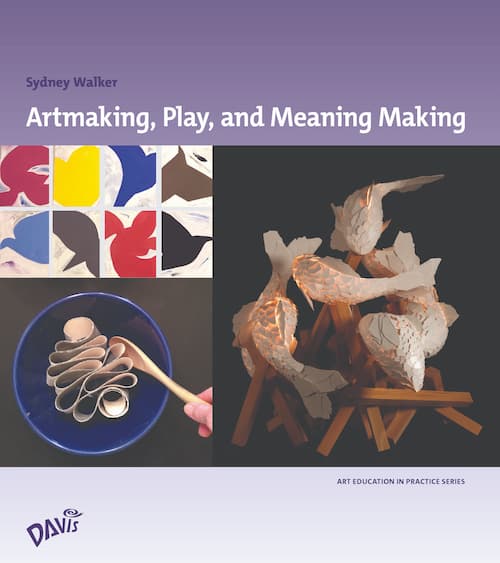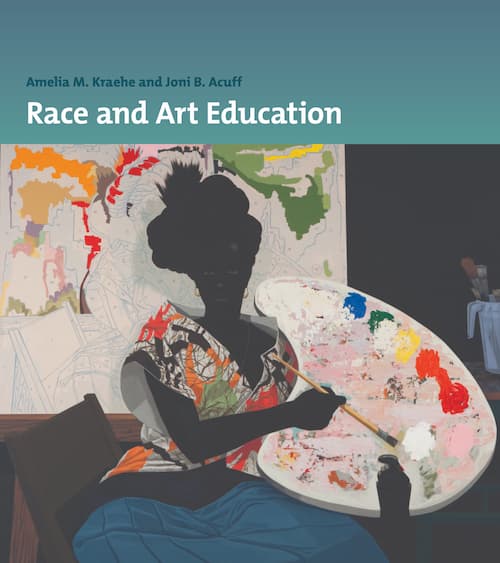Written by and for art educators from all backgrounds and contexts, this volume offers guidance for expanding students' opportunities to critically examine current events, histories, and cultural assumptions in ways that are relevant and inclusive of all identities. Readers will learn how to use contemporary art and dialogue as tools to acknowledge and value the unique perspectives of each person.
Explore how art education can contribute to a more just and sustainable planet. Making the case that ecopedagogy and eco-art can transform and enrich art education, Bertling introduces these two burgeoning movements and then outlines how they can be infused into K-12 art education.
From geometry in motion to the possibilities of pi, this stunning volume reveals how art has been inspired by the beauty and poetry of mathematical principles. He explores the growing sensation of math art, presenting more than 80 pieces, including a crocheted, colorful representation of non-Euclidian geometry that looks like sea coral and a 65-ton, 28-foot-tall bronze sculpture covered in a space-filling curve.
Compiles 16 visual art teacher perspectives on assessments across diverse classrooms and contexts. Presents assessment perspectives with an eye to the National Core Art Standards (NCAS)
The practice of art-based research uses art making as a primary mode of enquiry. Drawing on contributions from arts therapies, education, history, organizational studies, and philosophy, the essays critically examine unique challenges that include the personal and sometimes intimate nature of artistic enquiry and the complexities of the partnership with social science which has dominated applied arts research.
Harness the power of creativity to celebrate your community and change the world. Have fun with 38 creative projects that empower you to use your art, actions, and words to create meaningful change.
A collection of essays which brings together the leading scholars in visual research. Clearly structured, and written in an engaging and accessible style throughout, this work is for teachers and students across the arts, humanities and social sciences.
Introduces artistic behaviors that sustain engagement, such as problem finding, innovation, play, representation, collaboration, and more. Provides instructional modes for differentiation, including whole-group, small-group, individual, and peer coaching. Offers management strategies for choice-based learning environments, structuring time, design of studio centers, and exhibition. Highlights artist statements by children identifying personal relevancy, discovery learning, and reflection.
Informed by psychology and practical teaching with children, Children Draw guides readers through the progressive stages and characteristics of drawing development as children grow and change mentally, physically, socially, emotionally, and creatively. It offers tips about encouraging children to express their ideas visually, age-appropriate art materials, workspaces, and different media, as well as suggestions for making an art museum visit more meaningful--not to mention more fun.
Practicing art educators (PreK-16) offer both a comprehensive framework for understanding student-directed learning and concrete pedagogical strategies to implement student-direct learning activities in school. In addition, research-based assessment strategies provide educators with evidence of student mastery and achievement. Teachers who structure self-directed learning activities can facilitate effective differentiation as students engage in the curriculum at their level.

This title explores the use of play as a method for provoking new ways of thinking. The author draws from contemporary artists and classroom artmaking to demonstrate how paradoxical play works to evoke diverse thought and challenges students to move beyond traditional artmaking. Walker provides art educators with the theoretical underpinnings as well as a set of approaches that can be conceptualized as a form of play. She introduces six kinds of play and contemporary artists whose work exemplifies these kinds of play. In each chapter, she distinguishes the characteristics of play involved and shows how they look in the lives of students.

"This title in the Art Education in Practice Series addresses issues of race in an accessible style and with a focus on classroom practice. There is sparse literature that supports teachers in developing the kind of knowledge and sensitivities about race needed for todays art classrooms. This book aims to provide a well-informed introduction to essential concepts, vocabularies, strategies, and methods for engaging race and racialized human differences in a constructive, equity-oriented manner. Kraehe and Acuff carefully explore topics including how race and racism enter classrooms, and concepts like unconscious bias and microaggression."--Publishers website
Marjorie and Brent Wilson’s classic guide for teachers and parents is now expanded and updated! Using hundreds of real examples, this new version breaks children’s art into three types: when the children draw on their own, influenced by peers and popular culture; when the teacher initiates playful and game-like drawing; and when adults and kids draw together to develop new visual worlds. The Wilsons offer suggestions to help children expand their artistic abilities and imagination, including creating narrative drawings about themselves, their families, their friends, and their lives.

Taking inspiration from a variety of contemporary approaches, this book presents a framework for Choice-Based instruction for Secondary Level (grades 6-12) Art Education. The Open Art Room provides a student-centered approach to art instruction that is inspirational, practical, and classroom-tested -- Provided by the publisher.